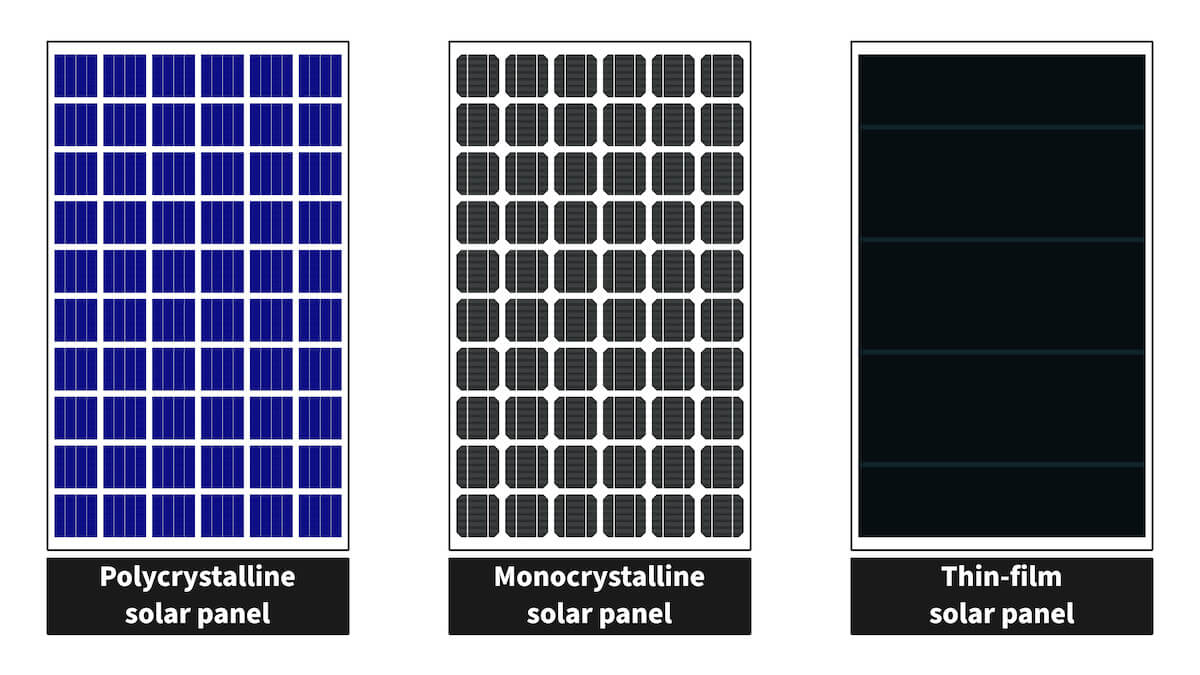
Contents
Introduction:
Solar panels are a popular choice for renewable energy generation. It is important to understand the different types of solar panels in order to make an informed decision for your energy needs. This article explores the key differences between monocrystalline, polycrystalline, and thin-film solar panels, highlighting their potential benefits and drawbacks.
Historical Background:
Solar panels have evolved significantly since their inception. The history of solar panels dates back to the mid-19th century when the photovoltaic effect was discovered. However, it wasn’t until the 1950s that the first practical solar panel was developed. Over time, advancements in the field have led to the development of three main types of solar panels: monocrystalline, polycrystalline, and thin-film.
Key Concepts and Definitions:
To understand the differences between the three types of solar panels, it is important to define and explain key terms. Monocrystalline solar panels are made from a single crystal structure, typically silicon, which allows for higher efficiency. Polycrystalline solar panels, on the other hand, are composed of multiple silicon crystals, resulting in slightly lower efficiency but lower production costs. Thin-film solar panels are made by depositing a thin layer of photovoltaic material onto a substrate, making them lightweight and flexible.
Main Discussion Points:
Point 1: Monocrystalline Solar Panels
Monocrystalline solar panels are known for their high efficiency rates due to their single-crystal structure. The uniformity of the crystal structure allows for greater electron flow, resulting in higher power output. However, monocrystalline panels are also the most expensive option and can be less efficient in extreme temperatures. They typically have a lifespan of 25 to 30 years and provide a reliable source of clean energy.
Point 2: Polycrystalline Solar Panels
Polycrystalline solar panels are made from multiple silicon crystals, resulting in a lower efficiency compared to monocrystalline panels. However, they are more cost-effective to produce and perform better in high-temperature conditions. Polycrystalline panels have a slightly shorter lifespan of 20 to 25 years but still offer a reliable source of renewable energy.
Point 3: Thin-film Solar Panels
Thin-film solar panels are the most lightweight and flexible option. They are made by depositing a thin layer of photovoltaic material onto a substrate, such as glass or metal. While thin-film panels have lower efficiency rates compared to monocrystalline and polycrystalline panels, they excel in low-light conditions and can be used in various applications. However, they have a shorter lifespan of around 10 to 20 years and may require more frequent replacement.
Case Studies or Examples:
Real-world examples of solar panel installations can provide insights into the practical applications of each type. For instance, monocrystalline solar panels are commonly used in residential setups where space is limited but high efficiency is desired. Polycrystalline panels are often utilized in large-scale commercial projects due to their cost-effectiveness. Thin-film solar panels find applications in areas where flexibility and lightweight design are essential, such as portable solar chargers.
Current Trends or Developments:
The solar energy industry is continuously evolving, and new trends and advancements are shaping the future of solar panels. Recent research and innovations have focused on improving the efficiency of all three types of panels, making them more cost-effective and sustainable. Additionally, advancements in material science and manufacturing techniques are leading to the development of even more efficient and affordable solar panels.
Challenges or Controversies:
While solar energy is considered a clean and renewable source, there are challenges and controversies associated with different types of solar panels. One ongoing debate revolves around the environmental impact of manufacturing and disposing of solar panels, particularly regarding the use of toxic materials. Additionally, there are differing viewpoints on the overall efficiency and cost-effectiveness of each type of panel.
Future Outlook:
The future of solar panels looks promising, with emerging technologies and advancements on the horizon. Researchers are exploring new materials and manufacturing processes that could further improve the efficiency and affordability of solar panels. Additionally, developments in energy storage technologies may enhance the viability of solar energy as a reliable source of power.
Conclusion:
Understanding the differences between monocrystalline, polycrystalline, and thin-film solar panels is crucial for making an informed decision when considering renewable energy options. Each type has its own advantages and disadvantages, and the choice ultimately depends on individual circumstances and priorities. By weighing the benefits and drawbacks of each type, individuals and businesses can harness the power of solar energy effectively.